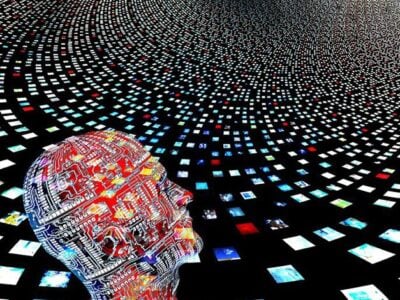
Algorithm beats radiologists in diagnosing x-rays
Designed “to overcome limits of human perception and avoid errors,” the algorithm can diagnose up to 14 types of medical conditions. Further, say the researchers, it is able to diagnose pneumonia – which is especially difficult to spot on X-rays – better than expert radiologists working alone.
“Interpreting X-ray images to diagnose pathologies like pneumonia is very challenging, and we know that there’s a lot of variability in the diagnoses radiologists arrive at,” says Pranav Rajpurkar, a graduate student in the Machine Learning Group at Stanford and co-lead author of a paper on the research. “We became interested in developing machine learning algorithms that could learn from hundreds of thousands of chest X-ray diagnoses and make accurate diagnoses.”
The algorithm, called CheXNet, was trained on the National Institutes of Health’s ChestX-ray14 – the largest publicly available chest X-ray dataset, which contains over 100,000 frontal-view chest X-ray images labeled with up to 14 possible pathologies. Focusing on pneumonia – which causes more than 1 million hospitalizations and 50,000 deaths in the U.S. each year – the researchers had four Stanford radiologists independently annotate 420 of the images for possible indications of that disease.
Within a week, say the researchers, the algorithm – a 121-layer convolutional neural network – was able to diagnose 10 of the pathologies labeled in the X-rays more accurately than previous state-of-the-art results, and was able to beat these standards in all 14 identification tasks in just over a month. in addition, during that time span, it also outperformed the four Stanford radiologists in accurately diagnosing pneumonia.
According to the researchers, their algorithm now has the highest performance of any work that has come out so far related to the chest X-ray dataset. In addition to the algorithm, the researchers have developed a computer-based tool that produces a “heat map” of the chest X-rays, where different colors represent areas that the algorithm determines are most likely to represent pneumonia – a tool they hope could help reduce the number of missed cases of pneumonia and improve radiologist workflow by showing them where to look first, leading to faster diagnoses.
“We plan to continue building and improving upon medical algorithms that can automatically detect abnormalities and we hope to make high-quality, anonymized medical datasets publicly available for others to work on similar problems,” says Jeremy Irvin, a graduate student in the Machine Learning group and co-lead author of the paper. “There is massive potential for machine learning to improve the current health care system, and we want to continue to be at the forefront of innovation in the field.”
For more, see “CheXNet: Radiologist-Level Pneumonia Detection on Chest X-Rays with Deep Learning.”
Stanford University Machine Learning Group
Related articles:
Deep learning algorithm beats cardiologists at arrhythmia diagnosis
AI speeds up precision medicine, says IBM Watson study
Intel neural network processor promises to ‘revolutionize’ AI computing
AI algorithm tracks sleep stages with radio waves
 If you enjoyed this article, you will like the following ones: don't miss them by subscribing to :
eeNews on Google News
If you enjoyed this article, you will like the following ones: don't miss them by subscribing to :
eeNews on Google News




